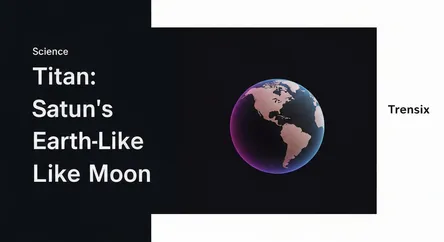Science
Titan: Saturn's Earth-Like Moon

Discover Titan, Saturn's largest moon. With a thick atmosphere and liquid lakes, it's a prime target in the search for life beyond Earth.
What is it?
Titan is Saturn's largest moon and the second-largest in our solar system. It is a unique world, distinguished by its thick, nitrogen-rich atmosphere, which is denser than Earth's. Unlike any other body besides our planet, Titan has stable bodies of surface liquid, including rivers, lakes, and seas. However, these are composed of liquid methane and ethane, not water. Its surface is a cold, icy landscape sculpted by wind and rain, creating features like dunes and river channels that are eerily similar to Earth's, but under different chemical conditions.
Why is it trending?
Scientific interest in Titan is surging due to its potential to harbor life or pre-biotic chemistry. Data from the Cassini-Huygens mission continues to yield fascinating discoveries about its complex organic chemistry. The upcoming NASA Dragonfly mission, planned for the 2030s, is generating significant excitement. This rotorcraft lander will fly to multiple locations on Titan's surface to study its chemistry and assess its habitability, making it one of the most anticipated planetary science missions.
How does it affect people?
Studying Titan pushes the boundaries of our understanding of planetary science and astrobiology. It provides a natural laboratory for exploring how life might arise in environments vastly different from Earth. This research drives technological innovation, from developing autonomous drones for space exploration to advanced instruments for detecting organic molecules. Ultimately, Titan captures the imagination, fueling curiosity about our place in the cosmos and the profound question of whether we are alone.